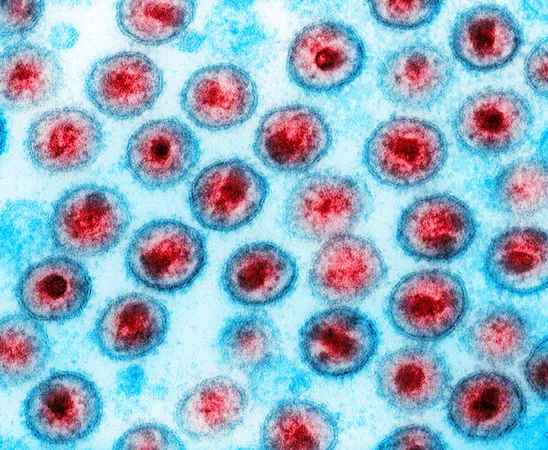
Unraveling the Deadly Link: How HIV Tat Fuels Tuberculosis Infection
2025-09-22
Author: John Tan
The HIV-TB Connection: A Major Health Crisis
Tuberculosis (TB) continues to be the leading cause of death among those living with HIV, representing a grave public health crisis. Astonishingly, even people on effective antiretroviral therapy (ART) face a staggering four- to seven-fold increased risk of contracting TB as compared to their HIV-negative counterparts. A groundbreaking new study sheds light on this alarming issue, revealing how HIV employs a cunning strategy to compromise the immune response.
The Role of the HIV Tat Protein
In a striking study titled “HIV-1 Tat Favors the Multiplication of Mycobacterium tuberculosis and Toxoplasma by Inhibiting Clathrin-Mediated Endocytosis and Autophagy,” researchers from the French National Centre for Scientific Research (CNRS) and various universities have identified that the virus's trans-activator of transcription, known as Tat, directly undermines a key immune defense mechanism within macrophages, the body’s cellular cleanup crew.
Tat's Disruption of Immune Defense
Tat, which circulates in the bloodstream of HIV-positive individuals even when viral levels appear undetectable due to ART, binds to a molecule known as PI(4,5)P2. This binding not only anchors Tat to the cell membrane but also disrupts vital processes. By occupying PI(4,5)P2, Tat blocks the recruitment of AP-2, a necessary protein for clathrin-mediated endocytosis, ultimately halting the autophagy pathway that normally clears out pathogens.
Increased Risk of Infection
Research conducted on human macrophages found that exposure to Tat significantly boosts the growth of Mycobacterium tuberculosis and also enhances the intracellular replication of Toxoplasma gondii, another infectious parasite. Alarmingly, even zebrafish larvae injected with Tat demonstrated increased susceptibility to a TB-related bacterium, Mycobacterium marinum.
Understanding the Implications
This insight sheds light on why individuals with well-managed HIV still exhibit a strikingly higher vulnerability to TB compared to the general population. Despite ART effectively targeting HIV's replication, it does not inhibit the production of Tat and other regulatory proteins. This suggests that Tat plays a significant role in enhancing susceptibility to TB among those on ART.
A New Path Forward in Treatment
The study proposes a potential therapeutic avenue to combat this infectious duo. Given that ART does not prevent Tat’s release, developing strategies to enhance or mimic autophagy could serve as an effective complementary treatment, reducing TB incidence among HIV-positive populations. This research highlights the need for novel drugs that could either reactivate autophagic processes or block Tat's interference with immune function, presenting new hope in the fight against the world’s deadliest infectious diseases.

 Brasil (PT)
Brasil (PT)
 Canada (EN)
Canada (EN)
 Chile (ES)
Chile (ES)
 Česko (CS)
Česko (CS)
 대한민국 (KO)
대한민국 (KO)
 España (ES)
España (ES)
 France (FR)
France (FR)
 Hong Kong (EN)
Hong Kong (EN)
 Italia (IT)
Italia (IT)
 日本 (JA)
日本 (JA)
 Magyarország (HU)
Magyarország (HU)
 Norge (NO)
Norge (NO)
 Polska (PL)
Polska (PL)
 Schweiz (DE)
Schweiz (DE)
 Singapore (EN)
Singapore (EN)
 Sverige (SV)
Sverige (SV)
 Suomi (FI)
Suomi (FI)
 Türkiye (TR)
Türkiye (TR)
 الإمارات العربية المتحدة (AR)
الإمارات العربية المتحدة (AR)